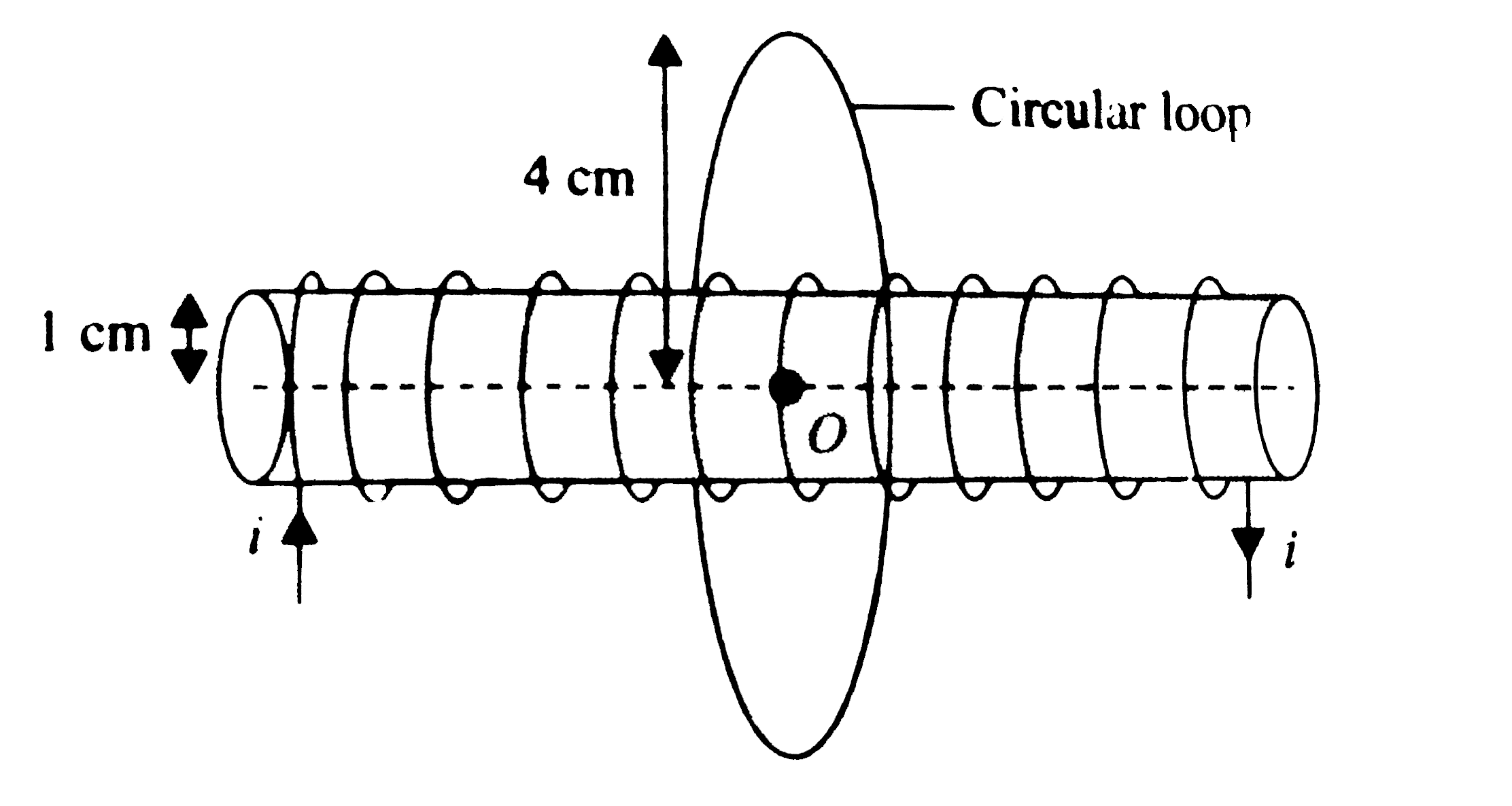A solenoid has an inductance of 50 mH and a resistance of 0.025Ω. If it is connected to a battery, how long will it take for the current to reach one half of its final equilibrium value?
1.38 s
1.2 s
6.32 s
0.23 s
The correct Answer is:A
To solve the problem step by step, we will use the formula for the current in an RL circuit and the properties of logarithms.
Step 1: Identify the given values
- Inductance (L) = 50 mH = 50 × 10^(-3) H = 0.050 H
- Resistance (R) = 0.025 Ω
Step 2: Calculate the time constant (τ)
The time constant (τ) for an RL circuit is given by the formula:
τ=LR
Substituting the values:
τ=0.050H0.025Ω=2s
Step 3: Write the equation for current (I) in the circuit
The current in an RL circuit as a function of time (t) is given by:
I(t)=I0(1−e−tτ)
where I0 is the maximum (equilibrium) current.
Step 4: Set up the equation for half of the final current
We want to find the time t when the current I(t) is half of its maximum value I0:
I(t)=I02
Substituting this into the current equation:
I02=I0(1−e−tτ)
Step 5: Simplify the equation
Dividing both sides by I0:
12=1−e−tτ
Rearranging gives:
e−tτ=1−12=12
Step 6: Take the natural logarithm of both sides
Taking the natural logarithm:
−tτ=ln(12)
This can be rewritten as:
t=−τln(12)
Step 7: Substitute the value of τ
We know τ=2s:
t=−2ln(12)
Using the property of logarithms ln(12)=−ln(2):
t=2ln(2)
Step 8: Calculate the value of t
Using ln(2)≈0.693:
t=2×0.693≈1.386s
Final Answer
The time it takes for the current to reach one half of its final equilibrium value is approximately:
t≈1.39s
- Inductance (L) = 50 mH = 50 × 10^(-3) H = 0.050 H
- Resistance (R) = 0.025 Ω
The time constant (τ) for an RL circuit is given by the formula:
τ=LR
Substituting the values:
τ=0.050H0.025Ω=2s
The current in an RL circuit as a function of time (t) is given by:
I(t)=I0(1−e−tτ)
where I0 is the maximum (equilibrium) current.
We want to find the time t when the current I(t) is half of its maximum value I0:
I(t)=I02
Substituting this into the current equation:
I02=I0(1−e−tτ)
Dividing both sides by I0:
12=1−e−tτ
Rearranging gives:
e−tτ=1−12=12
Taking the natural logarithm:
−tτ=ln(12)
This can be rewritten as:
t=−τln(12)
We know τ=2s:
t=−2ln(12)
Using the property of logarithms ln(12)=−ln(2):
t=2ln(2)
Using ln(2)≈0.693:
t=2×0.693≈1.386s
The time it takes for the current to reach one half of its final equilibrium value is approximately:
t≈1.39s
Similar Questions
A solenoid has an inductance of 10H and a resistance of 2Ω. It is connected to a 10V battery. How long will it take for the magnetic energy to reach 1/4 of its maximum value?
View SolutionA solenoid of resistance 50Ω and inductance 80 H is connected to a 200 V battery, How long will it take for the current to reach 50% of its final equlibrium value ? Calculate the maximum enargy stored ?
View Solution
Knowledge Check
A solenoid has an inductance of 10 henty and a resistance of 2 ohm. It is connected to a 10 volt battery. How long will it take for the magnetic energy to reach 1/4 of its maximum value?
A3.5sB2.5sC5.5sD7.5s
A solenoid of inductance 50 mH and resistance 10 Omega is connected to a battery of 6V. Find the time elapsed before the current acquires half of its steady - stae value.
View SolutionA solenoid of inductance 50 mH and resistance 10Ω is connected to a battery of 6V. Find the time elapsed before the current acquires half of its steady - state value.
View SolutionA long solenoid having n = 200 turns per metre has a circular cross-section of radius a1=1cm. A circular conducting loop of radius a2=4cm and resistance R=5(Ω) encircles the solenoid such that the centre of circular loop coincides with the midpoint of the axial line of the solenoid and they have the same axis as shown in Fig.

A current 't' in the solenoid results in magnetic field along its axis with magnitude B=(μ)ni at points well inside the solenoid on its axis. We can neglect the insignificant field outside the solenoid. This results in a magnetic flux (ϕ)B through the circular loop. If the current in the winding of solenoid is changed, it will also change the magnetic field B=(μ)0ni and hence also the magnetic flux through the circular loop. Obvisouly, it will result in an induced emf or induced electric field in the circular loop and an induced current will appear in the loop. Let current in the winding of solenoid be reduced at a rate of 75A/sec.
When the current in the solenoid becomes zero so that external magnetic field for the loop stops changing, current in the loop will follow a differenctial equation given by [You may use an approximation that field at all points in the area of loop is the same as at the centre
View SolutionA coil of inductance 300mh and resistance 2Ω is connected to a source of voltage 2V. The current reaches half of its steady state value in
View SolutionA coil of inductance 8.4mH and resistance 6 Ω is connected to a 12V battery. The current in the coil is 1.0A at approximately the time.
View SolutionA coil of inductance 8.4 mH and resistance 6(Ω) is connected to a 12 V battery. The current in the coil is 1.0 A at approximately the time
View SolutionA coil having an inductance L and a resistance R is connected to a battery of emfε. Find the time elapsed before, the magnetic field energy stored in the circuit reaches half its maximum value.
View Solution
